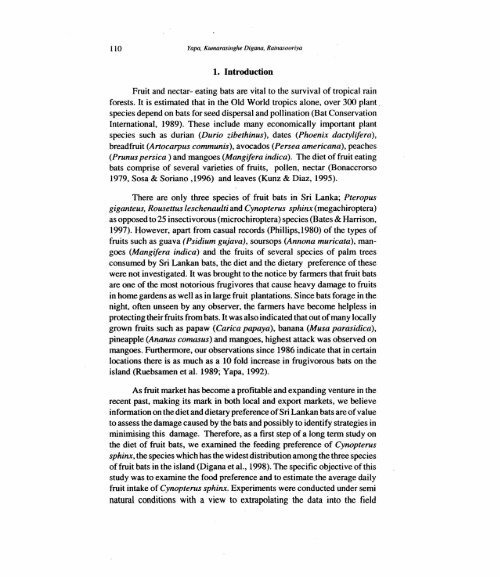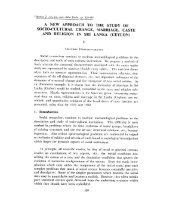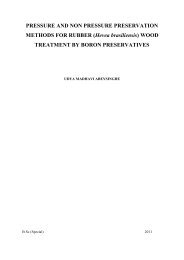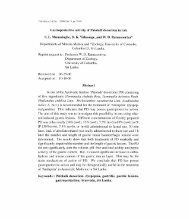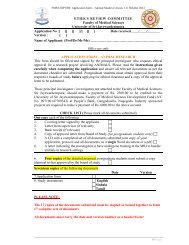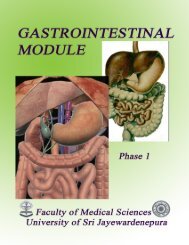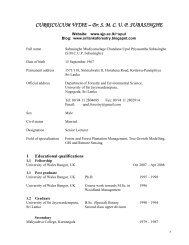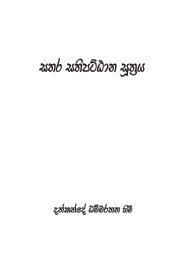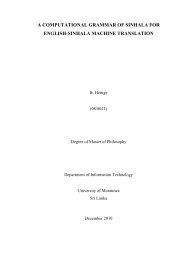Food preferences.pdf - Dl Sjp Ac Lk
Food preferences.pdf - Dl Sjp Ac Lk
Food preferences.pdf - Dl Sjp Ac Lk
- No tags were found...
You also want an ePaper? Increase the reach of your titles
YUMPU automatically turns print PDFs into web optimized ePapers that Google loves.
110 Yapa, Kumarasinghe Digana, Ratnasooriya1. IntroductionFruit and nectar- eating bats are vital to the survival of tropical rainforests. It is estimated that in the Old World tropics alone, over 300 plant.species depend on bats for seed dispersal and pollination (Bat ConservationInternational, 1989). These include many economically important plantspecies such as durian (Durio zibethinus), dates (Phoenix dactylifera),breadfruit (Artocarpus communis), avocados (Persea americana), peaches(Prunus persica ) and mangoes (Mangifera indica). The diet of fruit eatingbats comprise of several varieties of fruits, pollen, nectar (Bonaccrorso1979, Sosa & Soriano ,1996) and leaves (Kunz & Diaz, 1995).There are only three species of fruit bats in Sri Lanka; Pteropusgiganteus, Rousettus leschenaulti and Cynopterus sphinx (megachiroptera)as opposed to 25 insectivorous (microchiroptera) species (Bates & Harrison,1997). However, apart from casual records (Phillips, 1980) of the types offruits such as guava (Psidium gujava), soursops (Annona muricata), mangoes(Mangifera indica) and the fruits of several species of palm treesconsumed by Sri Lankan bats, the diet and the dietary preference of thesewere not investigated. It was brought to the notice by farmers that fruit batsare one of the most notorious frugivores that cause heavy damage to fruitsin home gardens as well as in large fruit plantations. Since bats forage in thenight, often unseen by any observer, the farmers have become helpless inprotecting their fruits from bats. It was also indicated that out of many locallygrown fruits such as papaw (Carica papaya), banana (Musa parasidica),pineapple (Ananas comas us) and mangoes, highest attack was observed onmangoes. Furthermore, our observations since 1986 indicate that in certainlocations there is as much as a 10 fold increase in frugivorous bats on theisland (Ruebsamen et al. 1989; Yapa, 1992).As fruit market has become a profitable and expanding venture in therecent past, making its mark in both local and export markets, we believeinformation on the diet and dietary preference of Sri Lankan bats are of valueto assess the damage caused by the bats and possibly to identify strategies inminimising this damage. Therefore, as a first step of a long term study onthe diet of fruit bats, we examined the feeding preference of Cynopterussphinx, the species which has the widest distribution among the three speciesof fruit bats in the island (Digana et aI., 1998). The specific objective of thisstudy was to examine the food preference and to estimate the average dailyfruit intake of Cynopterus sphinx. Experiments were conducted under seminatural conditions with a view to extrapolating the data into the field


